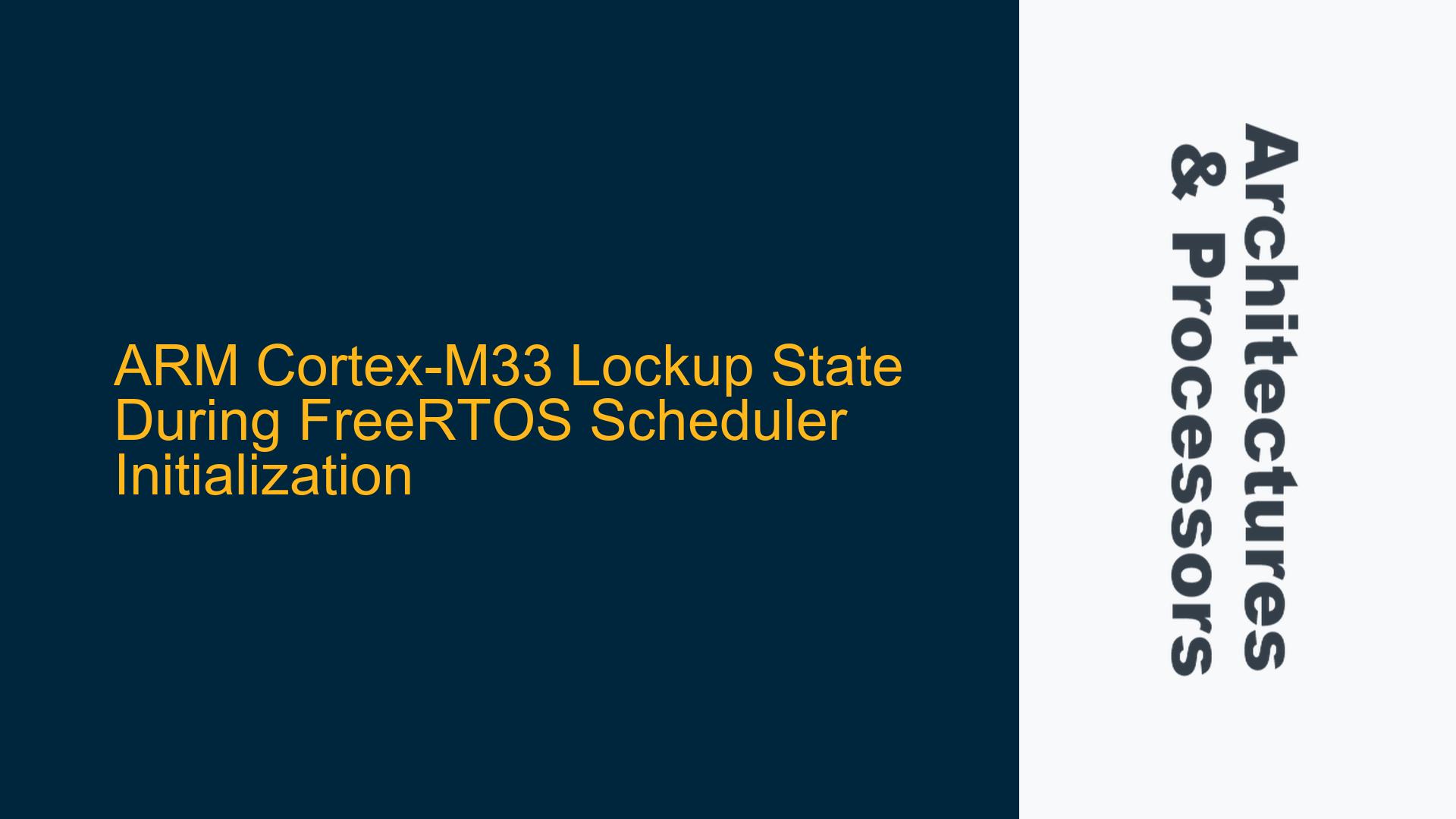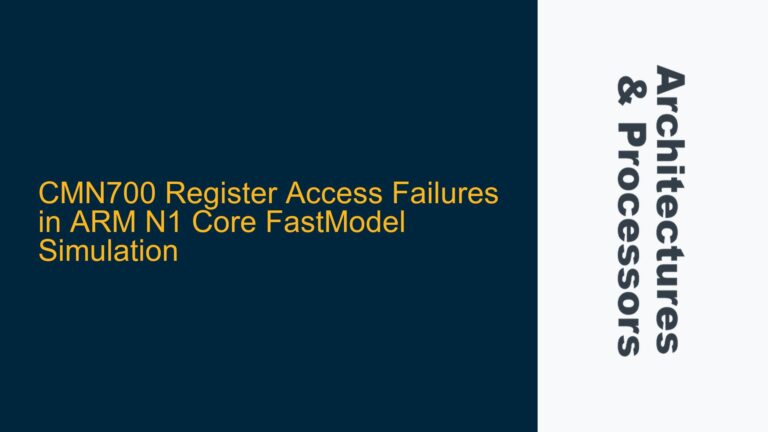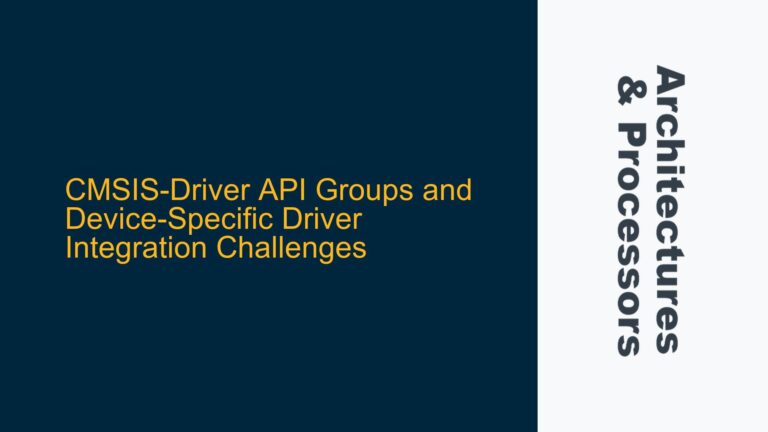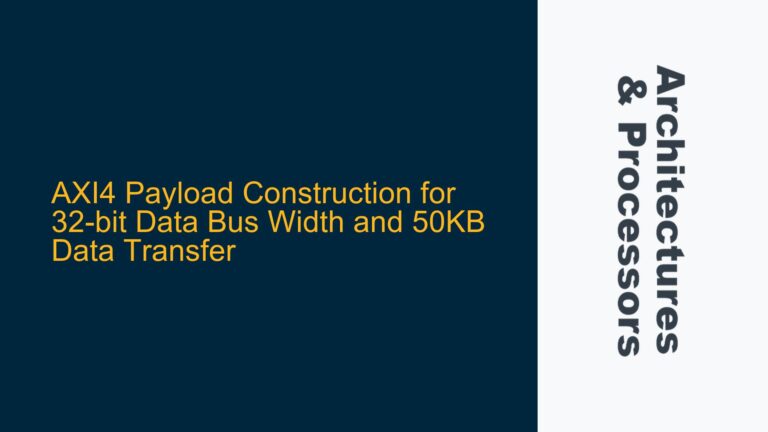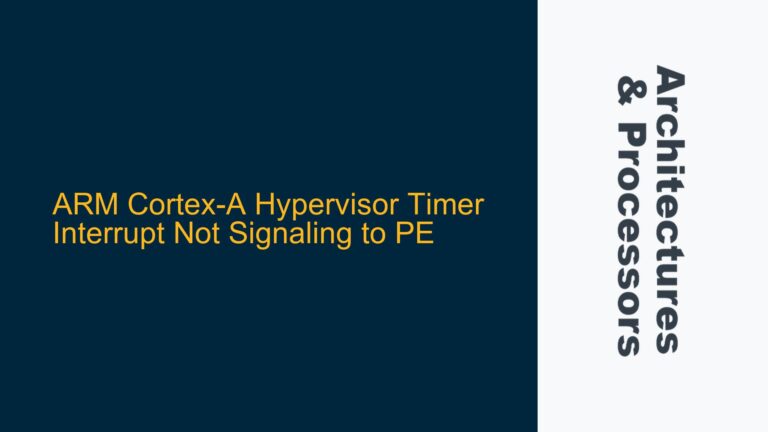ARM Cortex-M33 Lockup State at vStartFirstTask Due to SVC Instruction
The issue at hand involves an ARM Cortex-M33 processor entering a lockup state during the initialization of the FreeRTOS scheduler, specifically when executing the vStartFirstTask function. The lockup occurs at the SVC %0 instruction, which is a system call designed to start the first task in FreeRTOS. The processor escalates a configurable-priority exception to a HardFault, indicating a severe issue in the system’s initialization or configuration. The HardFault Status Register (HFSR) shows a value of 0x40000000, which corresponds to a "FORCED" HardFault, meaning that a lower-priority exception has been escalated to a HardFault due to a configuration or execution error. Additionally, the Interrupt Control and State Register (ICSR) shows values of 0xB803 for both secure and non-secure states, and the Configurable Fault Status Register (CFSR) shows a value of 0x1000, indicating an issue with the stack pointer or memory access.
The stack pointer (MSP_S) is reported as 0x454C4428, which is invalid according to the vector table. This suggests that the stack pointer is not correctly initialized or that the vector table is misconfigured. The lockup state is a critical failure mode in ARM Cortex-M processors, where the processor is unable to recover from an exception or fault, leading to a system halt. This issue is particularly problematic in real-time operating systems like FreeRTOS, where correct initialization of the scheduler is crucial for task management and system operation.
Misconfigured Vector Table and Stack Pointer Initialization
The root cause of the lockup state appears to be related to the misconfiguration of the vector table and the stack pointer initialization. The vector table in ARM Cortex-M processors is a critical data structure that contains the initial stack pointer value and the addresses of exception handlers. If the vector table is not correctly configured, the processor may attempt to use an invalid stack pointer, leading to a HardFault. In this case, the stack pointer value 0x454C4428 is clearly invalid, as it does not point to a valid memory region defined in the scatter loading file.
The scatter loading file provided in the discussion shows the memory regions and their attributes. The LR_IROM1 region is defined from 0x00000000 to 0x40000000, with the ER_IROM1 region starting at 0x00000000 and spanning 0x00200000. The RW_IRAM1 region is defined as uninitialized memory starting at 0x20000000 and spanning 0x00200000. The stack and heap are defined at 0x38200000 and 0x38200000+0x600, respectively. However, the stack pointer value 0x454C4428 does not fall within any of these defined regions, indicating a misconfiguration in the vector table or the scatter loading file.
Another possible cause is the use of an incompatible version of FreeRTOS. The Cortex-M33 is part of the ARMv8-M architecture, which introduces new features such as TrustZone and additional security states. FreeRTOS versions prior to v10.2.1 did not fully support ARMv8-M, which could lead to initialization issues. Although the user upgraded to FreeRTOS v10.2.1, the problem persisted, suggesting that the issue is not solely related to the FreeRTOS version but also to the configuration of the vector table and stack pointer.
Correcting Vector Table Configuration and Ensuring Proper Stack Initialization
To resolve the lockup state, the first step is to verify and correct the vector table configuration. The vector table must be located at the correct memory address, and the initial stack pointer value must point to a valid memory region. The scatter loading file should be reviewed to ensure that the stack region is correctly defined and that the stack pointer value in the vector table matches the defined stack region. The following steps outline the troubleshooting process:
-
Verify Vector Table Location and Content: Ensure that the vector table is located at the correct memory address, typically
0x00000000for Cortex-M processors. The first entry in the vector table should contain the initial stack pointer value, which must point to a valid memory region. Use a debugger to inspect the vector table and confirm that the stack pointer value is correct. -
Review Scatter Loading File: The scatter loading file defines the memory regions and their attributes. Verify that the stack region is correctly defined and that the stack pointer value in the vector table falls within this region. If necessary, adjust the scatter loading file to ensure that the stack region is correctly allocated.
-
Check FreeRTOS Configuration: Ensure that the FreeRTOS configuration is compatible with the Cortex-M33 and ARMv8-M architecture. Verify that the correct version of FreeRTOS is being used and that any necessary modifications for ARMv8-M support have been applied. Review the FreeRTOS documentation for any specific configuration requirements for Cortex-M33.
-
Debugging HardFault: Use a debugger to analyze the HardFault and identify the exact cause of the exception. The HardFault Status Register (HFSR), Interrupt Control and State Register (ICSR), and Configurable Fault Status Register (CFSR) provide valuable information about the cause of the fault. Inspect these registers to determine whether the fault is due to a stack overflow, invalid memory access, or other issues.
-
Stack Overflow Protection: Implement stack overflow protection mechanisms to prevent stack corruption. FreeRTOS provides options for stack overflow checking, which can help identify and prevent stack-related issues. Enable stack overflow checking in the FreeRTOS configuration and monitor the stack usage during runtime.
-
Memory Barrier and Synchronization: Ensure that memory barriers and synchronization mechanisms are correctly implemented, especially when dealing with secure and non-secure states in ARMv8-M. Improper synchronization can lead to race conditions and memory corruption, which may result in a HardFault.
-
Update Firmware and Tools: Ensure that the firmware, compiler, and debugger tools are up to date. Older versions of these tools may contain bugs or lack support for newer processor architectures. Updating to the latest versions can resolve compatibility issues and provide improved debugging capabilities.
By following these steps, the issue of the lockup state during FreeRTOS scheduler initialization can be systematically addressed. The key is to ensure that the vector table and stack pointer are correctly configured and that the FreeRTOS configuration is compatible with the Cortex-M33 architecture. Additionally, thorough debugging and analysis of the HardFault can provide insights into the root cause of the issue and guide the necessary corrective actions.
| Step | Action | Expected Outcome |
|---|---|---|
| Verify Vector Table Location | Ensure vector table is at 0x00000000 and contains valid stack pointer. |
Correct stack pointer value in vector table. |
| Review Scatter Loading File | Confirm stack region is correctly defined in scatter file. | Stack pointer falls within defined stack region. |
| Check FreeRTOS Configuration | Ensure FreeRTOS is configured for ARMv8-M. | FreeRTOS initializes without errors on Cortex-M33. |
| Debugging HardFault | Analyze HFSR, ICSR, and CFSR to identify fault cause. | Identify root cause of HardFault (e.g., stack overflow, invalid memory access). |
| Implement Stack Overflow Protection | Enable stack overflow checking in FreeRTOS. | Detect and prevent stack corruption during runtime. |
| Memory Barrier and Synchronization | Ensure proper use of memory barriers in ARMv8-M. | Prevent race conditions and memory corruption. |
| Update Firmware and Tools | Update to latest firmware, compiler, and debugger tools. | Resolve compatibility issues and improve debugging capabilities. |
In conclusion, the lockup state during FreeRTOS scheduler initialization on the ARM Cortex-M33 is likely caused by a misconfigured vector table and stack pointer. By carefully reviewing and
